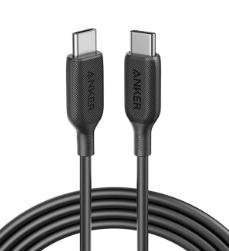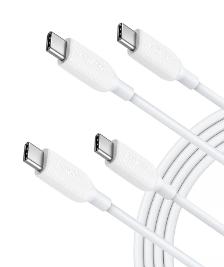
USB-C cables have become the backbone of modern connectivity, serving as the go-to solution for charging, data transfer, and various other tasks. Their versatility and high-speed capabilities make them invaluable companions to our smartphones, laptops, and other electronic devices. To ensure they continue to perform at their best, it's crucial to practice proper maintenance and care. In this article, we'll explore tips and techniques for maximizing the efficiency and lifespan of your USB-C cables.

How to Maintain and Care for USB-C Cables
1. Handle with Care
One of the most basic yet critical tips for maintaining USB-C cables is to handle them gently. Avoid excessive bending, twisting, or tugging, especially near the connectors. These actions can cause stress on the internal wiring, potentially leading to fraying or breakage over time.
2. Unplug Safely
When disconnecting a USB-C cable, always pull it out by gripping the connector itself, not the cable. This prevents undue strain on the cable and ensures that the internal connections remain intact. Additionally, avoid yanking the cable from the port, as this can damage both the cable and the port.
3. Keep Them Clean
Dirt, dust, and debris can accumulate on the connectors over time, potentially hindering performance. Periodically inspect your USB-C cables for any visible dirt or grime. If you notice any, use a soft, lint-free cloth to gently wipe away the debris. Avoid using sharp objects or abrasive materials, as they can scratch the connectors.
4. Store Properly
Proper storage is essential for preventing tangles, knots, and other forms of cable damage. Consider using cable organizers, such as cable ties or cord clips, to keep your USB-C cables neatly coiled when not in use. Avoid tightly winding them around sharp edges or objects, as this can lead to kinks or damage.
5. Avoid Extreme Temperatures
USB-C cables, like most electronic components, are sensitive to extreme temperatures. Avoid exposing them to excessive heat or cold, as this can affect the integrity of the internal wiring and insulation. Store your cables in a cool, dry place away from direct sunlight and heating sources.
6. Inspect Regularly
Routine inspections are a proactive way to catch potential issues before they escalate. Take a few moments to examine your USB-C cables for any signs of wear, fraying, or damage. Pay close attention to the connectors, as they are the most vulnerable parts of the cable.

7. Invest in Quality Cables
Not all USB-C cables are created equal. Investing in high-quality, certified cables can make a significant difference in their longevity and performance. Look for cables that are labeled as USB-IF certified or have undergone rigorous testing to meet industry standards.
8. Avoid Sharp Bends and Twists
While USB-C cables are designed to be flexible, they do have their limits. Avoid sharp bends or twists, especially near the connectors, as this can weaken the internal wiring and lead to cable failure over time.
9. Use Cable Management Solutions
Cable management solutions, such as cable clips, sleeves, and raceways, can help protect your USB-C cables from physical damage and tangling. These accessories provide a structured way to organize and secure your cables, reducing the risk of wear and tear.
10. Replace Damaged Cables Promptly
Despite your best efforts, USB-C cables may eventually wear out or become damaged. When this happens, it's important to replace them promptly. Continuing to use a damaged cable can lead to further problems, including potential damage to your devices.
Conclusion
By following these tips for maintaining and caring for your usb-c cables, you can extend their lifespan and ensure they continue to provide reliable performance. Remember, a little preventative care goes a long way in preserving the efficiency of these essential connectivity tools.